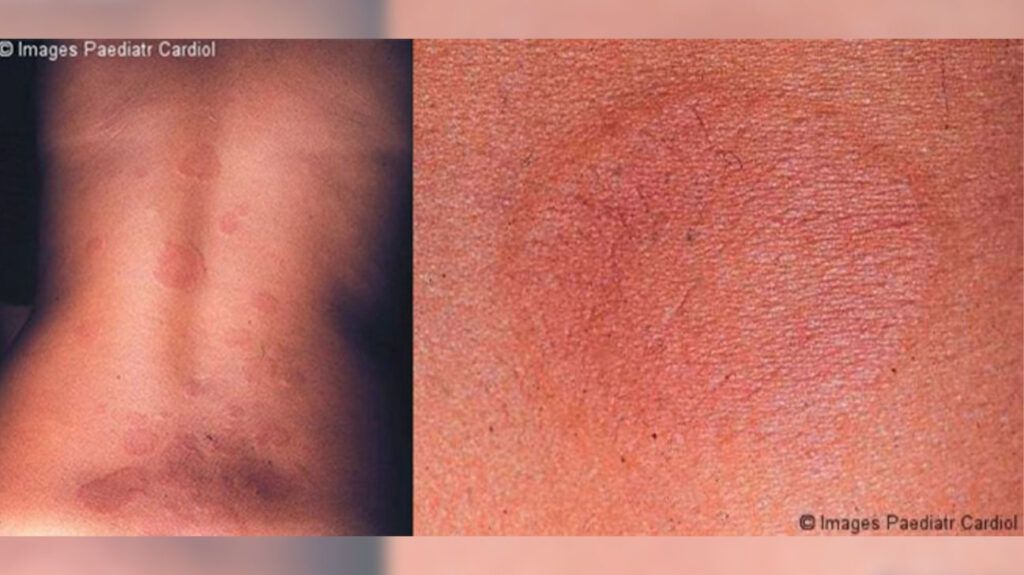Erythema marginatum in rheumatic fever is a rash that appears on the trunk and the upper parts of the arms and legs. It does not itch or cause pain.
Along with joint pain, involuntary movements, and heart problems, skin symptoms are among the main indications of rheumatic fever. However, erythema marginatum is one of the least common major signs.
Rheumatic fever and its effects on the body are caused by a group A streptococcus (GAS) infection, such as strep throat, that does not receive proper treatment.
This article explains what erythema marginatum in rheumatic fever is, including the symptoms, diagnosis, treatment, outlook, and prevention, as well as when to see a doctor.

Erythema marginatum is a rash that usually appears early in the course of rheumatic fever and disappears quickly. While it is one of the major signs of rheumatic fever, it is one of the least common, occurring in
What is rheumatic fever?
Rheumatic fever — sometimes called acute rheumatic fever — is an inflammatory condition that
- arthritis
- involuntary body movements
- carditis, which is inflammation of the heart
Carditis can lead to heart conditions such as heart failure, in which the heart cannot pump enough blood throughout the body.
What is erythema marginatum?
Erythema margination is a

Erythema marginatum
The rash
Rheumatic fever is the
GAS bacteria can cause strep throat, scarlet fever, and a skin infection called impetigo, but strep throat is the infection that
If a person has a sore throat that does not improve or worsens after a
A person should also consult a doctor if they have a rash or any other concerning symptoms.
A medical history and a physical examination can provide key information for a diagnosis because carditis associated with rheumatic fever generally appears
Doctors may find the rash challenging to identify on darker skin.
Lab tests may also be necessary. These can include:
- throat culture for GAS
- blood culture
- blood tests for various substances, such as complete blood counts
- skin biopsy
If heart symptoms are present, a doctor may order additional tests, including an EKG, which measures the electrical activity of the heartbeat, and an echocardiogram, which shows the structure and function of the heart.
Treatment can address the cause of rheumatic fever but
Because a GAS infection is the cause of rheumatic fever, first-line treatment
The rash can come and go repeatedly or linger for a
Because erythema marginatum
Frequent handwashing is the
It can also be helpful to avoid eating or drinking with the same dishes and utensils as someone who is sick. Only after someone has washed these items are they safe for another person to use.
Erythema marginatum in rheumatic fever can happen if a person contracts strep throat and does not receive proper treatment. It is a non-itchy, painless rash that appears on the trunk and the upper parts of the arms and legs.
The diagnosis may entail a medical history, a physical examination, and lab tests such as cultures and blood tests. A skin biopsy is rarely necessary.
Since the rash disappears on its own, doctors do not treat it. However, they do treat the infection — the cause of rheumatic fever — with an antibiotic. Erythema marginatum can recur or persist for a few days.
Prevention involves measures to avoid contracting strep throat, such as frequent handwashing.
A person should consult a doctor if they have a rash or if they have a sore throat that lingers or worsens.
